Enlarge
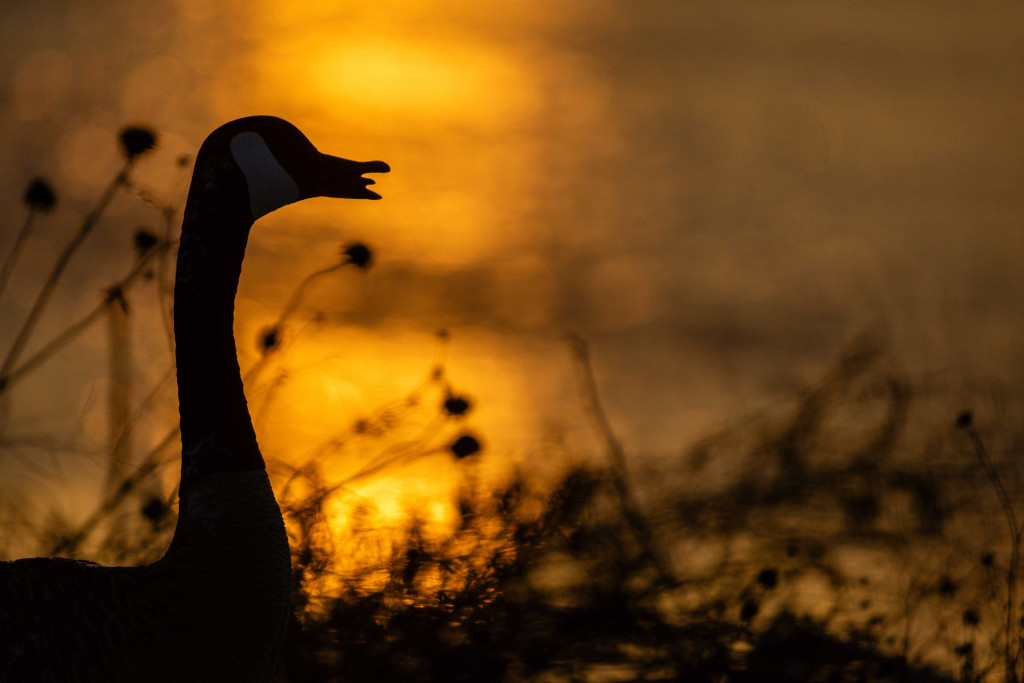
Photo by Jeff Kurrus, Nebraskaland Magazine
Story and photos by Jeff Kurrus
It’s easy to become entranced with these gigantic birds, their honks seemingly daring you to take the plunge into the deep water that is Canada goose hunting. But before you do, I’m going to encourage you not to. Find something, anything else, to do with your time. You’ll thank me for it.
Just What I Needed
First, you don’t have enough decoys. Well, maybe you do. But you probably don’t. In the beginning of my Nebraska goose hunting adventures, I picked up some decoy shells at a garage sale. I’ve never seen a more seemingly happy individual giving away good stuff.
My next goose hunting purchase was in the form of full-body stand-ups. This was a crowning achievement for the family and, outside of our automobiles, one of our most expensive purchases. Immediately, I was convinced that these $60-apiece decoys would be the difference in our group whispering “Maybe next time” to “Take ’em!”
Our last large purchase was silhouettes — five dozen to be exact. Because a bigger spread is better, right? But the more decoys that are out, the more a goose from the air can find something wrong.
After this multitude of purchases, there’s still no telling how many flocks of birds — or even a single or pair — have cupped in our direction and peeled off at the last second. “Something’s not quite right,” one of us will say.
On one morning like this, while hunting with a friend and my son, Eli, in eastern Nebraska, we had a combination of stand-ups and shells anywhere from 20 to 40 yards away and not a single bird would finish.
“If something isn’t working, make an adjustment,” long-time goose hunter and Nebraskaland writer Todd Mills had told us. So we flip-flopped our spread, moving anything less than 40 yards farther away and completely out of shooting range.
As we were returning to our blind, the next group of geese were cupping their wings between us and the closest decoy. We were now getting 20-yard, feet-on-the-deck shots and were done with a two-person limit in 30 minutes.
The next time we tried the same trick, we went home without firing a single shot.
“It has to be perfect,” my dad, Larry, has told me multiple times as he often watches from afar. “When you guys actually shoot any birds, it’s like killing a deer. It’s that momentous.”
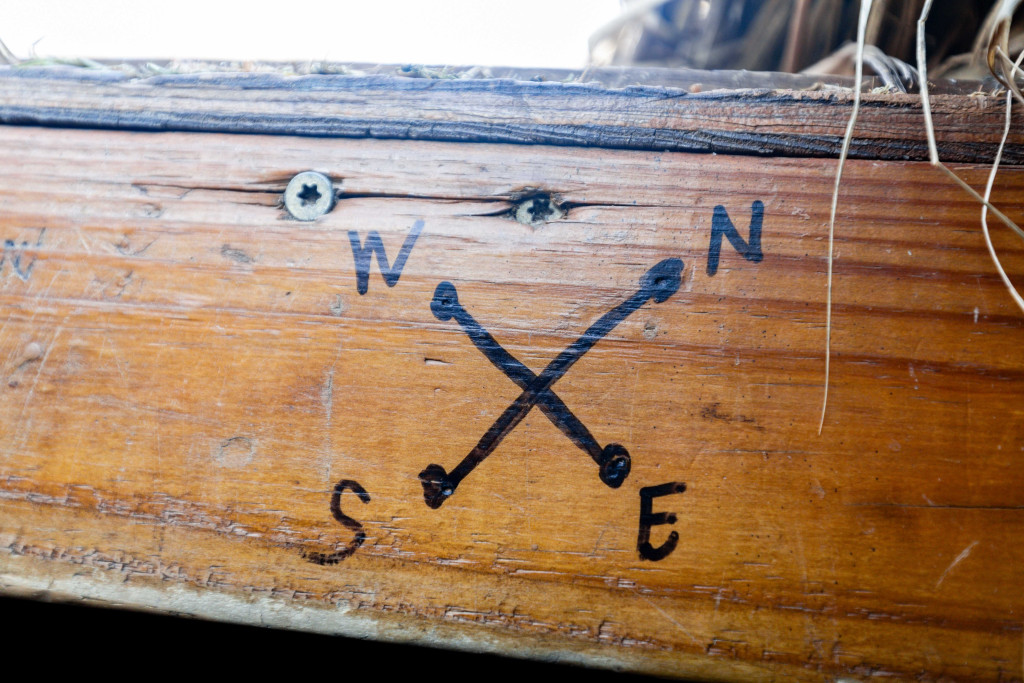
Let the Good Times Roll
There is a section of readers right now, after finishing that last statement, that are scoffing. At this precise moment, they are right in the middle of birds. But they are in the minority and should appreciate every second of good fortune. I wish we had when this was happening to us.
About four years ago, our group was hunting private ground near the Missouri River, and we were frequently killing birds. We had just enough standing water on the crop fields, and birds, more often than not, would work the area throughout the day.
We were shooting birds nearly every time we hunted. It became so commonplace that even our picture-taking slowly diminished. Why photograph these birds after a long day when there’d be more to take pictures of tomorrow? We thought these days would last forever.
They did not. The 2019 flood devastated the land where we hunted, making it unfarmable for a year and altering the entire region — from the pre- and post-hunt gas station stop to the land itself.
For a few years, we looked elsewhere. Trips east toward the river turned into trips west toward the Rainwater Basin. And while this has led our group to an entirely different part of the state with its own set of good fortune, we still desired being near the Missouri where, even for an occasional instance, we had felt like goose hunters.
Luckily, last year we were able to return to this spot, and once again we’re shooting some birds nearly every time we go. But we no longer take these days for granted. Last December during the holidays, our crew watched thousands of geese all afternoon, not one wanting to decoy.
“It’s tough when you’re not on the X,” said Mills, who was hunting with us that day.
“You think it’s our hide?” I asked, a question you will also repeat more than any other in your newfound pursuit.
“It always is,” Dad mumbled from his pulpit, both an eye-rolling indictment and a proclamation.
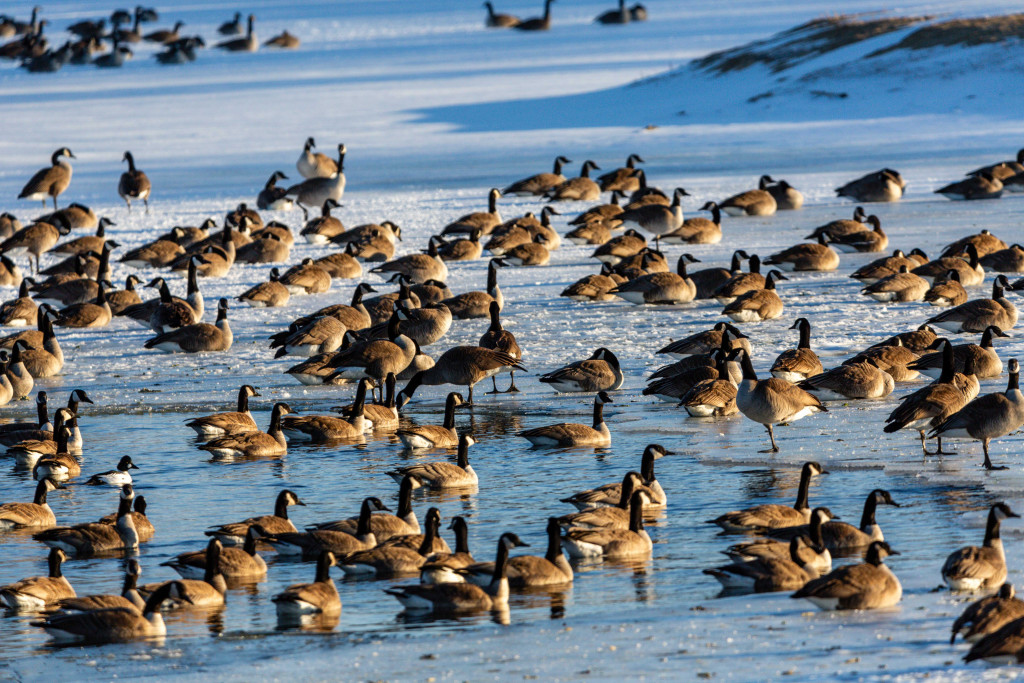
You Might Think
You might think a natural hide is the absolute best. Usually, but not always. Last year, our group hid inside a huge, grassy ditch in the middle of a cut crop field and every single bird avoided our spread. A year before, while hunting the same place, we couldn’t keep birds out of our decoys.
Another popular option is a laydown blind. I have one of the most comfortable ones on the market and hate it immensely. They are called coffin blinds for a reason. You can’t turn, can’t sit up, can’t fit your supplies in with you, and they stick out like any number of inappropriate clichés in church.
But at first, you’re convinced this is the answer — the best thing you’ve ever sat in until the birds circle, circle, then land behind you. You go home with a sorer neck than after the opening day of squirrel season.
What’s your other option then, Einstein? The birds are landing smack dab in the middle of the most wide open bean field that has ever existed.
“A-frame,” Mills told me years ago.
If you take his advice, sticking one of these blinds in the middle of a cut bean field, you’ll be convinced it would be better camouflaged if set in the middle of a Walmart parking lot. You’ll laugh at him and others like him, condemning their minor league-ness as you climb into your coffin.
Until you hear guns going off from those blinds and find out that geese will, in fact, land right on top of an A-frame, as long as one thing is for sure — the blind is sitting on the X.
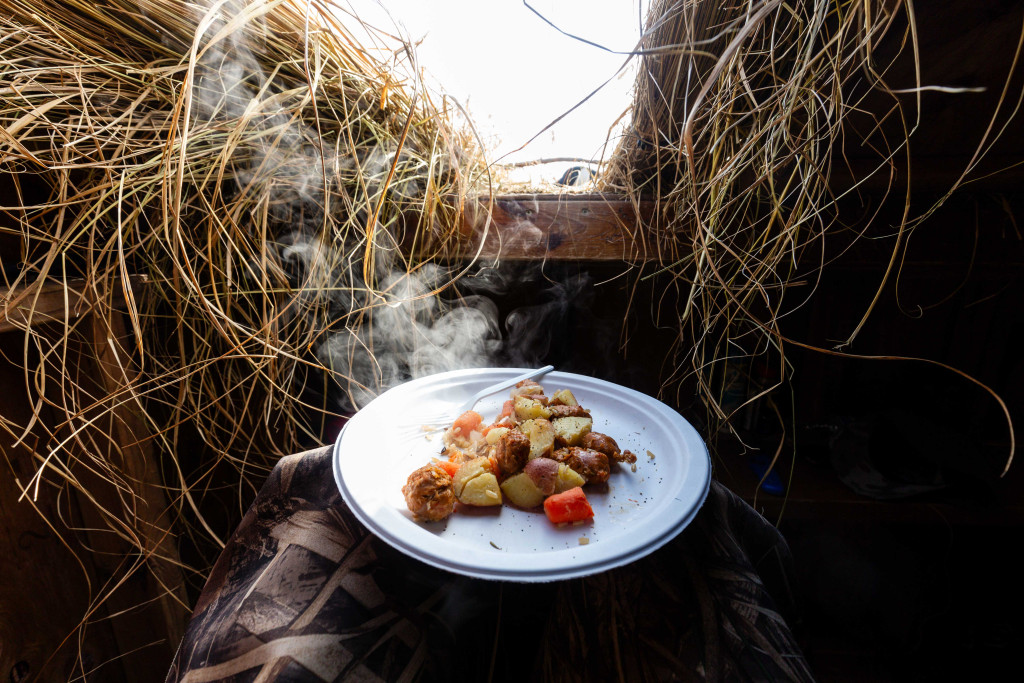
Magic
The “X,” as it’s known, is the exact, magical spot where you’re convinced birds will land when hunting.
Years before my shed and my hunting partners’ garages and sheds were filled with equipment, an old friend from Tennessee, Jeff Wages, would go with a group of hunting buddies to Canada, pulling a trailer of decoys 1,500 miles for the opportunity to hunt ducks. The group would break in half, with one group hunting during the morning while the other group scouted.
Once the hunt was over, the groups would share information and switch. Hunters became scouters; scouters became hunters. The scouting was the most important part. They had to find where birds were specifically working. They were looking for the X. Once they found birds, their job was to gain permission as quickly as possible and solidify their hide.
But there remains an issue with the X, whether hunting in Canada, Nebraska or all parts in between. Do not think you can hunt the field within sight of the X, waving your newly purchased goose flag trying to convince yourself that the third goose on the left side, the big one, almost came your way? He wasn’t going to. It’s as much mirage as it is false hope.
Being on the field next to the X also won’t work. Why visit you when there was still corn, and no hunters, in the next field over the day before? You might get an occasional curiosity flock, that’s for sure — the group of birds that veer your way because they’ve seen movement outside of the blind: a wayward retriever, or maybe two teenage boys throwing dirt clod footballs. The birds will momentarily cup their wings — something you and your buddies will talk about on your drive home — but they’ll turn and land in the next field over.
Because you have to be on … the … spot, and you have to be hidden. And, probably just as important as these factors is having the time to make your dreams come to fruition.
So be prepared for an all-day hunt. Yesterday’s 2 p.m. arrival means you have to cover the four hours preceding and the four hours after. If you’re going to put this much windshield time into this type of hunting, you can’t miss it.
Last season, a group of birds — 40 or 50 — had been working one of our fields. But for any number of reasons, we couldn’t get our schedules aligned to go. When we were finally able, it was going to be perfect. An afternoon storm was pushing through so we would start hunting midday.
However, when I awoke that morning, two inches of snow had already fallen and I had multiple phone calls from Mills.
When I finally called him back, his voice was somber. “Too late,” he said. “There are 200 birds in the field.”
A gigantic pit filled my stomach. “Tomorrow,” I replied. “They’ll be back.”
I was wrong. They never came back.
Touch and Go
On the X? Check. Hide? Check. Weather? Check. All of these are a great start, for sure, along with not too little or not too much calling. But now it gets complicated.
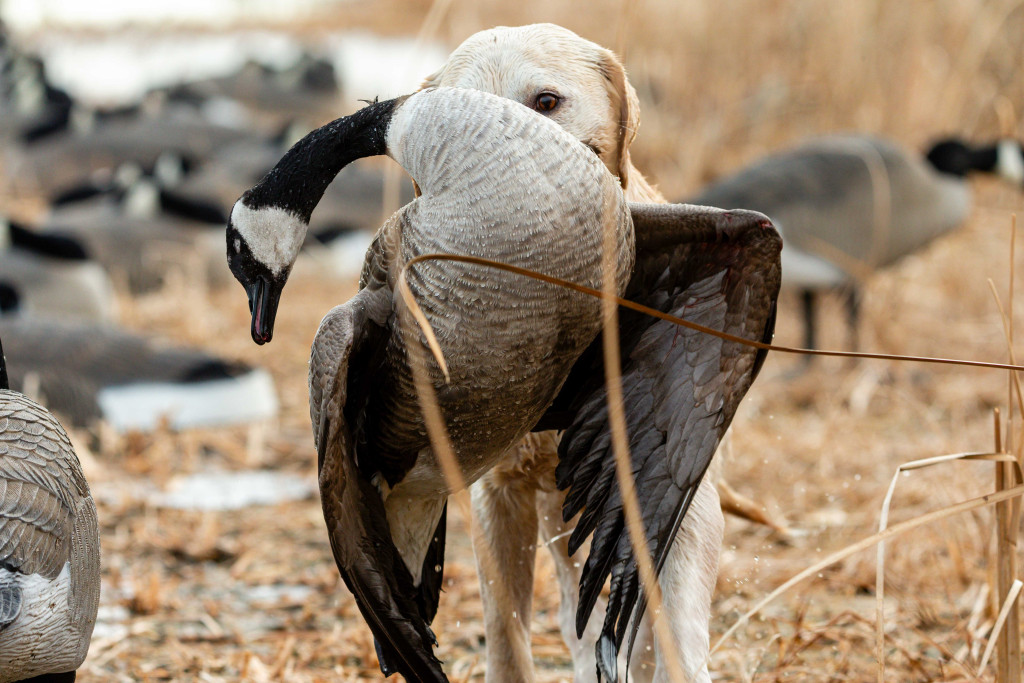
The first group of four birds are making a beeline to your spread, locked in from hundreds of yards away. You do a quick check on your blind mates, just to make sure all of their blond-haired children are wearing camo stocking caps or facemasks and the orange potato chip bags are properly hidden.
Now their distance is 100 yards … 80 … 60. Then they turn … making a small circle around your blind … and the closest bird is at 40 yards.
“One more pass,” your hunting partner says. And he’s right. Why shoot one at 40 when you can shoot four at 20 yards?
But on the circle, something happens. Did your buddy’s son poke his head out of the blind too soon? Did the flock hear that one bad note — the sound you’ll describe later as a squeak when your hunting partner is out of earshot — from his goose call. You don’t know what, never will know, but the birds turn and start lengthening their distance away from the blind … 60 … 80 … then finally pitching down 100 yards away from your spread.
You look up, and a group of 10 are coming your way. You flag desperately, the muscles in your forearms burning as this second group pitches right into the group of four.
“This isn’t good,” your partner says. “Should we go bust that other group up?”
This will require one in your group to walk toward the other birds and scare them, all the while hoping a larger group doesn’t see this strange movement in the field and bug out completely, ruining the entire afternoon hunt.
Then you have a brilliant idea. “Let’s send Eli.”
My 10-year-old son puts down his bag of sunflower seeds. “I’m in.”
He runs out of the blind in the direction of the group, everyone in the blind commenting how his gray and black snowsuit sort of looks like a Canada goose. Within 50 yards of the birds, they bust up and away from our spread.
But there’s another problem. We hear something. Over Eli’s shoulder, hundreds and hundreds of yards away, we see more than 200 birds already cupping their wings toward our spread.
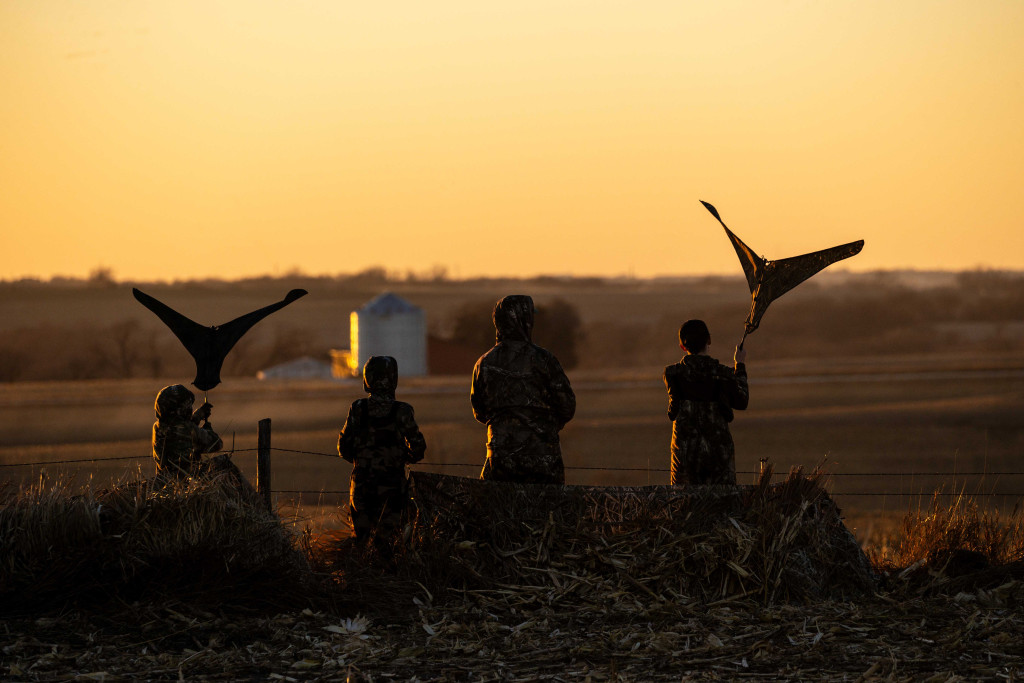
Eli sees this, too, and without any instructions, begins his sprint back toward the blind.
“Faster,” we yell at the kid, who is dodging and high-stepping between decoys as he tumbles outside of the blind and crawls in.
The birds in the air are undeterred. Their wings remain cupped. 100 … 50 … 30.
“Take ’em!” your partner yells, but when you stand up, you realize that the 30-yard estimate is off. They’re farther than that. But they know you’re there. This is your only chance.
The air fills with booms, one after the other as the flock drifts farther and farther away.
The Lab, appropriately named something akin to Hope, has been so patient in her kennel beside the blind but will have to be patient a little while longer. There’s not a single bird on the ground.
Everyone sits back down, closing their eyes as they shake their heads.
That was the moment that everything was right. Hide. The X. Everything.
And we missed it.
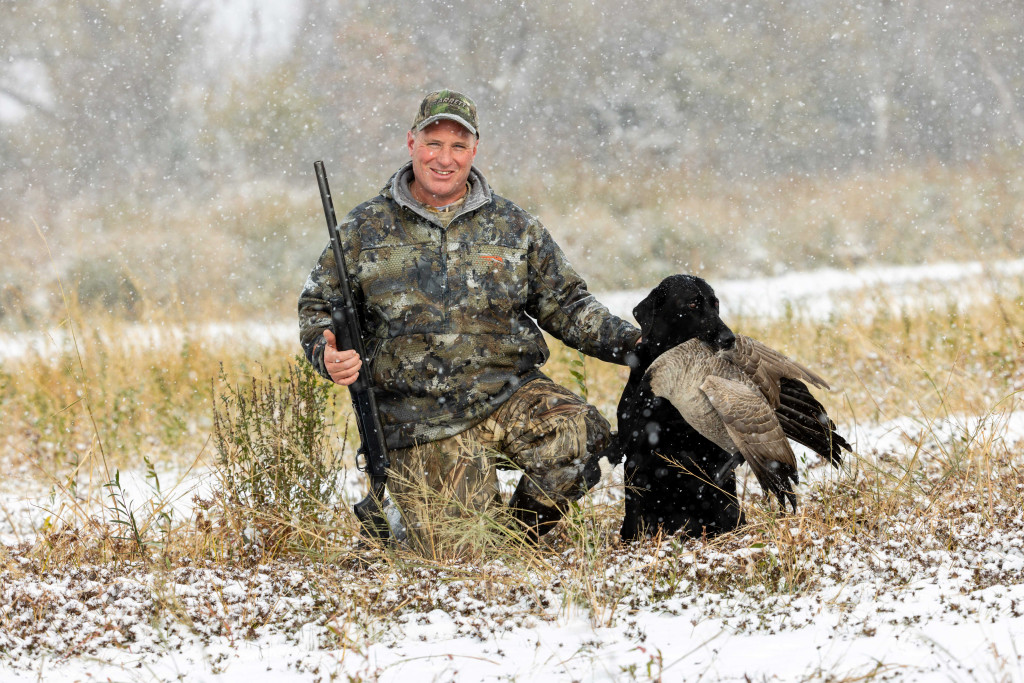
Since You’re Gone
Dad was right. Every single downed bird is a treasure, because it doesn’t matter if you shot 90, nine or none last year, it can all change — for better or worse — in a minute.
The nights when you mess up a flock are bad. You replay the moment repeatedly, not unlike a wayward shot from the deer stand or a missed receiver on the game-winning drive of the football game. It’s painful, because you know how much work it took to put yourself in that exact spot.
So, you completely understand why that guy was so happy to get rid of his decoys. It’s too dang hard to get this right.
But … if you ever do get it right, even one time, you have some major life decisions to make. For there is nothing, and I mean nothing, that satisfies the hunter’s soul as much as being on the X with birds on the deck — with some of your favorite people right next to you. During these moments, you’re convinced that guy getting rid of those decoys is the dumbest person in the world.
Goose Hunting Checklist
Hunting Partners
Find someone you like spending long hours with in frigid weather. Someone retired helps, as they will be able to scout. A wealthy friend definitely could help, but might not want to spend as much windshield time as you. However, they might be able to get you on the X better. A wealthy, childhood friend whose wedding you were in might be perfect.
Vacation Time
Being able to leave immediately is a must. You have to be on call to do this effectively. The snowstorm that was supposed to come at noon, when you told your boss you’d need to leave by 11 a.m. so you have enough hunting time, sped through Colorado and will be here by 9 a.m. Birds will want to get their feeding bags on. You will need a gift for your boss come the Holidays.
Storage
Decoys of various types, including ducks just in case that becomes a option, are not small. An extra garage stall is good — a dedicated goose shed is better. You’ll also need to find a place for your new dog, backup shotgun, shells and bulky hunting clothes. Wader hooks are nice, so they can easily dry, and you’ll probably want to save some room for your 4-wheel drive truck. A place to clean birds? Optional. Let’s not be totally outrageous.
The post Dear Potential Goose Hunters appeared first on Nebraskaland Magazine.
















